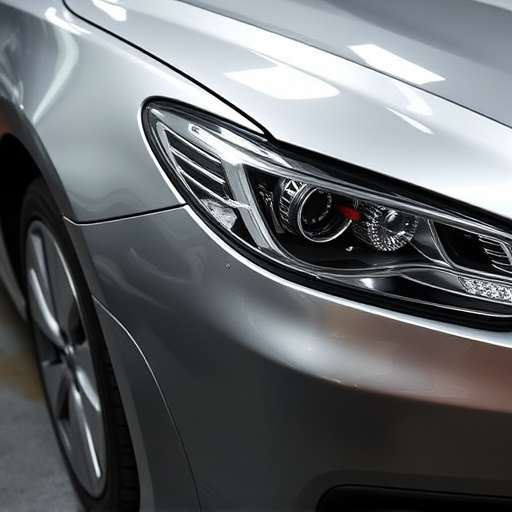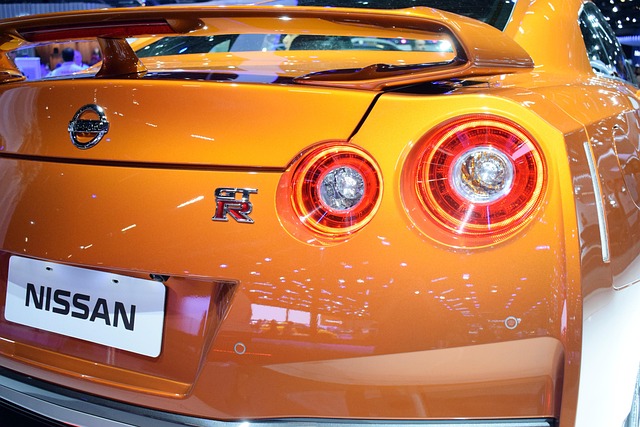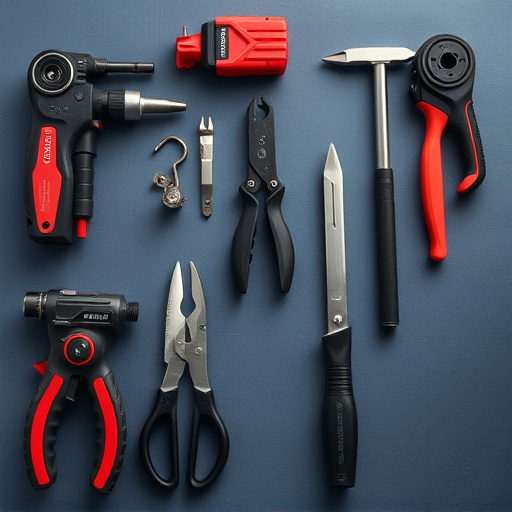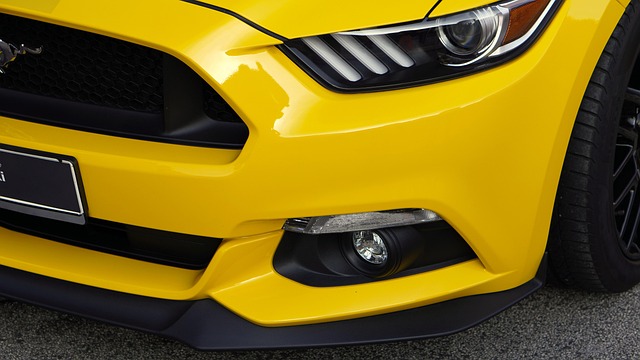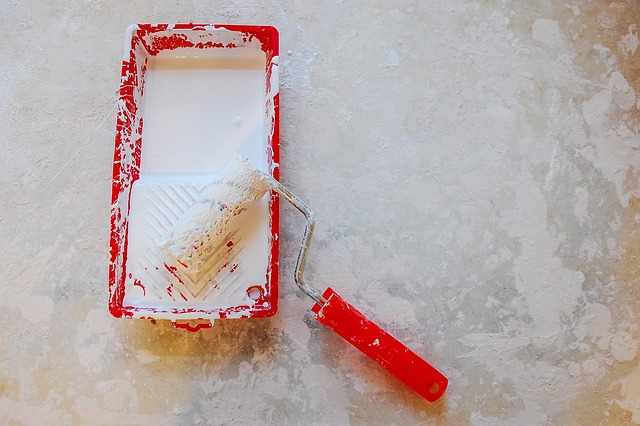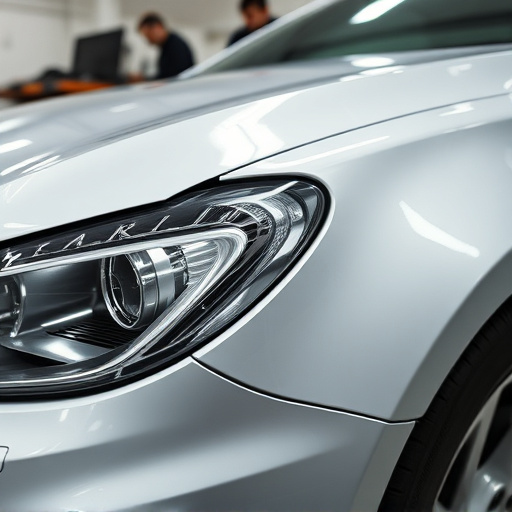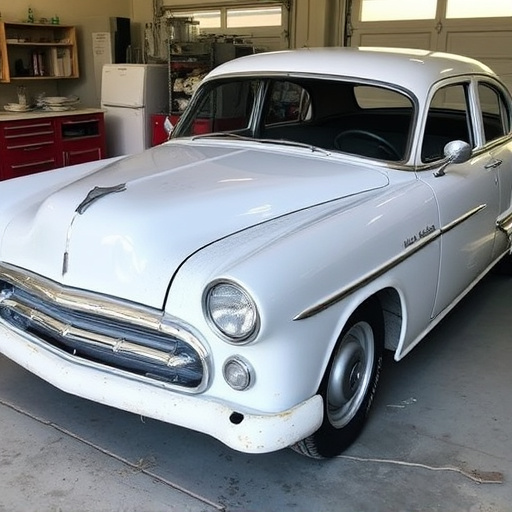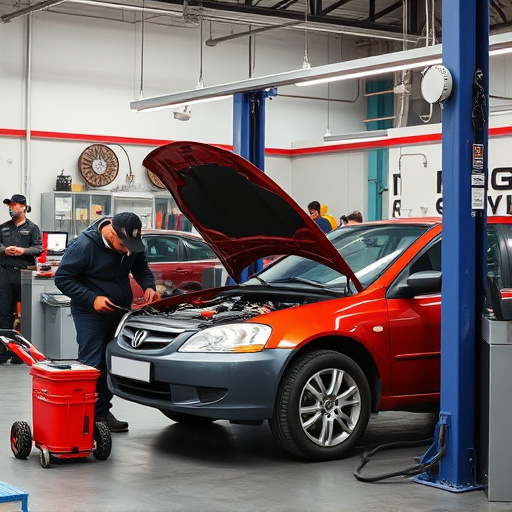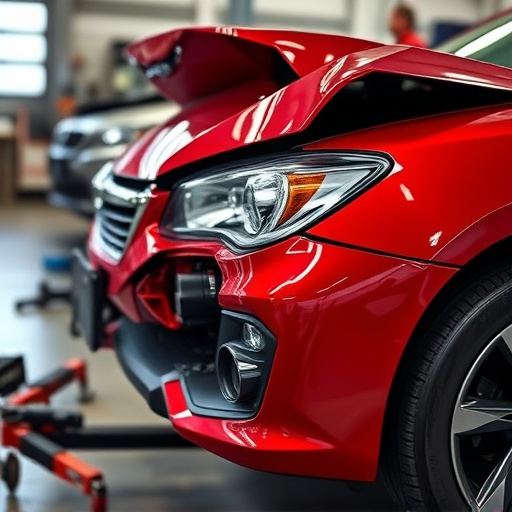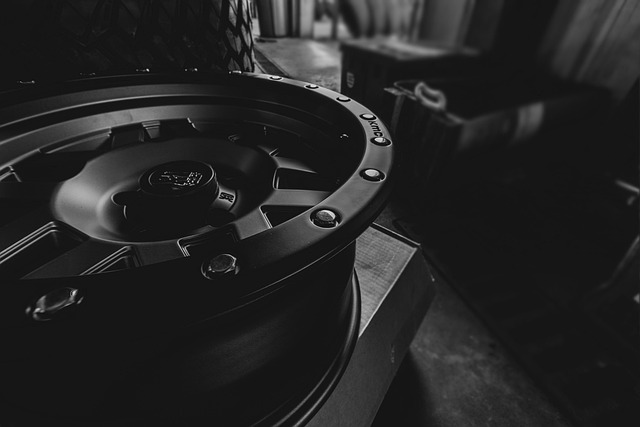Before installing new auto body panels, thorough cleaning and inspection are vital. Prepare surfaces, fix existing damage, then accurately measure, cut, and fit new panels using specialized tools and industrial-grade equipment. Ensure structural integrity and aesthetic appeal through meticulous preparation, precise cutting, and secure fastening with high-quality fasteners, addressing severe old panel damage with dent repair or restoration before installation.
Looking to replace auto body panels like a pro? This comprehensive guide breaks down the process into simple, manageable steps. From preparing your vehicle for the task to installing and securing new auto body panels seamlessly, we’ve got you covered. Follow these expert instructions to ensure a flawless repair, ensuring your vehicle looks as good as new with fresh, high-quality new auto body panels.
- Prepare the Vehicle for Panel Replacement
- Measure and Cut New Auto Body Panels
- Install and Secure New Panels Properly
Prepare the Vehicle for Panel Replacement
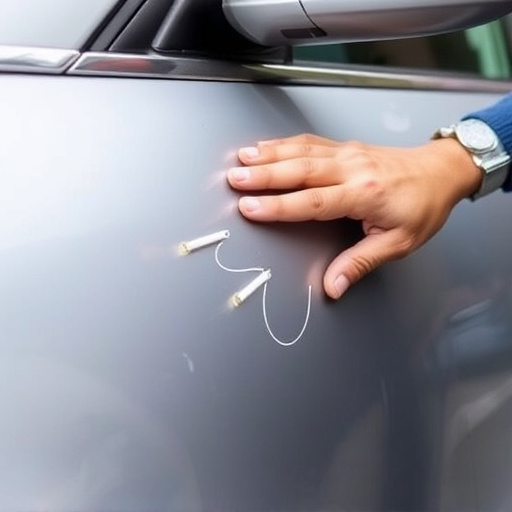
Before installing new auto body panels, it’s crucial to prepare the vehicle meticulously. Begin by thoroughly cleaning the car, removing any dirt, debris, or old paint that might interfere with the adhesion of the new panels. This step ensures a clean and smooth surface for accurate alignment and long-lasting results.
Next, inspect the existing damage and surrounding areas to identify any additional repairs needed. This may involve fixing dents, cracks, or damaged underlying structures. Proper preparation, including patching, priming, and painting (if necessary), creates a solid foundation for installing new auto body panels, ultimately ensuring the longevity and aesthetic appeal of the vehicle through top-tier auto body services.
Measure and Cut New Auto Body Panels
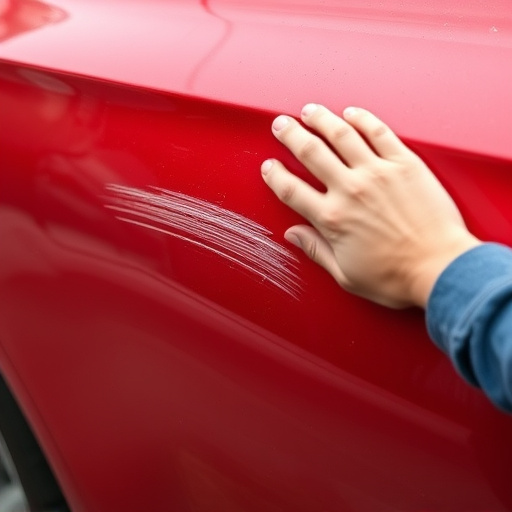
After removing the damaged or old auto body panels, the next crucial step is to measure and cut new ones accurately. This involves taking precise measurements of the existing frame and panel gaps to ensure a perfect fit. Using specialized tools like measuring tapes, angle gauges, and templates, you can map out the cutting lines on the new panels. The process requires attention to detail to maintain the vehicle’s structural integrity and aesthetic appeal.
Cutting new auto body panels is typically done using industrial-grade equipment, such as plasma cutters or laser cutters, for accuracy and efficiency. Once cut, the panels are carefully fitted into place, ensuring they align perfectly with the frame and surrounding components. This meticulous process, often aided by frame straightening techniques, ensures that the new auto body panels blend seamlessly with the rest of the vehicle, be it a modern ride or a classic car restoration project.
Install and Secure New Panels Properly
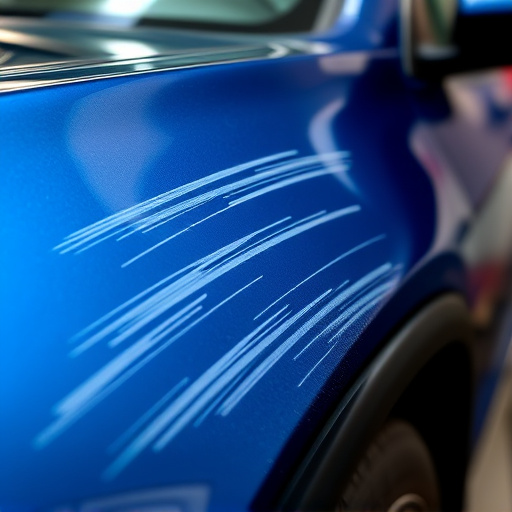
After removing the old, damaged auto body panels, it’s time to install and secure new ones properly. This step is crucial for ensuring your vehicle’s structural integrity and its overall aesthetic appeal. Begin by thoroughly cleaning the area where the new panel will be fitted, removing any debris or remaining traces of the old panel. Next, position the new panel carefully, aligning it with the vehicle’s frame and ensuring all holes match up precisely. Secure the panel using high-quality fasteners, such as bolts and nuts, tightening them according to the manufacturer’s specifications.
A proper installation involves not just fitting the panels but also making sure they are firmly anchored to the vehicle’s chassis and surrounding components. This prevents future issues like rattling or misalignment. In cases where the old panel had significant damage, like severe dents or cracks, addressing these through processes like vehicle dent repair or car body restoration before installing the new panel is essential for achieving a seamless fit and finish.
Replacing auto body panels is a meticulous process that requires precision and attention to detail. By following these steps—preparing your vehicle, measuring and cutting new panels, and ensuring proper installation—you can effectively restore damaged areas, enhancing both the structural integrity and aesthetic appeal of your vehicle. Incorporating new auto body panels is a surefire way to bring your vehicle back to its original condition or even improve upon it.
